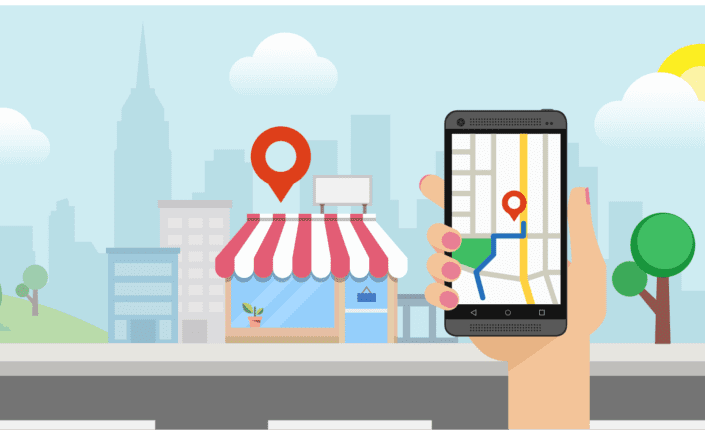In today’s guest post, Bubblegum Search’s Matt Cayless, shares his ‘Top Five’ SEO tips for improving Google local ranking performance.
Google search is constantly changing, but in 2016 and beyond we’re seeing some significant and challenging changes taking place for local search in particular. Is your local business prepared?
What is local SEO?
Local SEO is the process of optimising your online presence to increase visibility to local customers. For businesses that operate in specific areas only or who have bricks and mortar premises, local SEO is an incredibly valuable method for promoting their services. From restaurants and hairdressers to plumbers and lawyers, local SEO can help a huge variety of industries to tap into their local demographic.
What’s changed in local SEO ranking factors for 2016?
Until 2016, local SEO offered huge potential for businesses looking to draw in business from local search users because their sites were easily distinguishable from non-local organic listings in the SERPs. However, in 2015 Google changed the way it presents local search by reducing the number of local listings displayed.
This means that local businesses have to seriously amp up their local SEO efforts to increase the chances of being listed in the pack of top 3 local results. Although search users can click “More places” for more local results, the reality is that this extra click simply reduces visibility for businesses who haven’t made it into the local pack.
Not only that, but Google has also started to include ads in the “More places” results, which means that businesses relying on organic ranking have paid listings to compete with.
Our top five local SEO tips to improve Google local ranking
To maximise your chances of local SEO success, you need to pay attention to the leading ranking signals for local search – these five essential tips are a great way to get started.
1. Nail on-page signals by thinking of potential customers
Although there are some technical aspects to getting your on-page local SEO right, the most important thing you can do is craft content that provides all the information your potential customers need to choose your business. This will tell Google how relevant your website is. There are two key areas for on-page local SEO ranking signals: geography and services. You need to be clear what services you have on offer, and where you can provide them.
Aside from meta data, headers, images and quality content which are essential signals for all SEO, you should try to include the following on each of your web pages:
• Title tags which include your service, location and brand along with relevant keywords
• Google map showing your location
• NAP (name, address and phone number), preferably with Schema markup so that Google can immediately identify your contact information
• Testimonials, accreditations and external reviews to show credibility
• A site structure which makes sense, particularly if you cover multiple areas or have several offices, for example, www.domain.com/areas/county-1/
2. Create a Google My Business page
A My Business page helps you to claim your brand and address and reinforces your services and locations. It is crucial for local SEO success, so be sure to set up and verify yours ASAP. You can optimise it by:
• Keeping your NAP accurate and up to date, along with your web address.
• Choosing the right categories for your business to ensure you show up for relevant searches – try Googling local competitors to find the most appropriate category.
• Writing a compelling business description which sums up your services without worrying too much about keywords, which could be detrimental.
• Getting a minimum of five reviews, and making sure to reply (politely!) to all, even if they’re negative.
3. Build citations and be consistent
To assess your geographical relevance, Google likes to validate the information on your website and My Business page with information from around the web. The first thing to do is ensure your NAP is consistent everywhere, including on your social pages – even a little discrepancy like using a phone number with the area code in some places and without the area code in others can reduce the validity of your business information. Be sure to always use the same business name, too, so if you tend to switch between something like “Cake 4 U” and “Cake For You”, choose one and stick to it across the entire web. You should be just as consistent whenever you build new citations, too.
What is citation building? It’s the process of building a series of mentions of your business information on other websites. Note that this is very different than link building; links to your website aren’t always necessary when building citations, providing that your NAP information is correct and consistent. Citations basically help Google to validate your business name and location, so the more you can get from well-established and reputable sources, the better. Start with directories like yell.com or your local chamber of commerce, and use a local citation finder like BrightLocal to find more citation opportunities.
4. Get reviews
When you get reviews on your Google My Business page, your listing in the SERPs will be given a star rating that will definitely help you stand out amongst the competition. It’s unclear whether reviews affect the actual positioning of URLs in the SERP, or if they simply help to highlight listings and drive click-throughs; most likely it’s a combination of both. Either way, reviews are vital for local SEO success, so you need to know how to improve Google reviews and make the most of them.
First things first – get the reviews coming in. The best way to do this is to ask your customers for them. You could include a link to your My Business page in invoice emails, or display information on how to leave a review on a menu or business card. Be sure to engage with your reviewers too to prove that you’re acknowledging feedback properly. Respond to both good and bad reviews, taking time with the bad ones to apologise and deal with the customer’s complaints. Reviews showcase your customer service skills as well as endorse your business, and the way you deal with negativity says a lot about your service, so don’t panic about less than perfect ratings – just work on putting things right.
5. Use relevant geographic keywords
It’s natural that if you operate within a specific location you’ll talk about it in your web content, so be sure to include geographic keywords into your site. However, as with all types of keyword optimisation, don’t be tempted to cram them. A good strategy is to include your NAP on every web page so that your location is naturally mentioned (be sure to mark it up with Schema), then add extra mentions of the location sparingly throughout your content.
When researching your keywords, be sure to use tools that allow you to filter by location and category, like Google Keyword Planner and Google Trends both do. Look for long-tail keywords that are as relevant as possible to your business’s location and service offering, and be sure to create content around them that is genuinely relevant to the query.
If you’d like to contribute a guest post, we’d love to hear from you.
Author Biog:
Matt Cayless is the Director of Strategy at Bubblegum Search an SEO & Content Marketing Agency. He is an expert in search engine optimisation having worked on campaigns for some of the world’s biggest brands. When he’s not chasing the Google algorithms he enjoys training for marathons while remaining fearful of carbohydrates.


